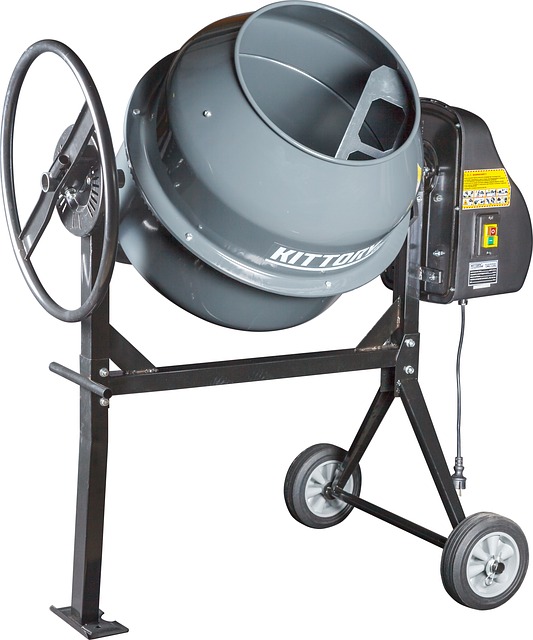Wood and steel framing are leading choices in construction, each offering unique advantages. Wood stands out for its versatility, sustainability, and excellent insulation, suitable for both residential and commercial projects, while providing faster build times and cost savings. Steel, on the other hand, excels in strength, durability, and fire resistance, making it ideal for commercial spaces with demanding structural requirements and aesthetic appeal. Modern engineering techniques have broadened the applications of these materials, integrating them into diverse architectural layouts through innovative structural elements like glulam and CLT.
In the world of construction, understanding the nuances of structural framing and layout is paramount for bringing diverse buildings to life. This article delves into the versatile options of wood, steel, and concrete framing solutions, catering to various architectural needs. We explore the advantages and innovative uses of each material, from the traditional appeal of wood framing to the modern efficiency of steel and concrete. Discover how these choices impact project outcomes in terms of speed, durability, sustainability, and structural integrity.
Wood Framing: Versatility and Sustainability in Building
Wood framing offers unparalleled versatility and sustainability in building, making it a preferred choice for various structural framing and layout applications. Its natural adaptability allows for quick installation, enabling faster project completion times. This material’s modular nature facilitates easy adjustments during construction, catering to both residential and commercial projects with diverse designs.
Sustainability is another significant advantage of wood framing. It is a renewable resource, sourced responsibly from managed forests, ensuring long-term availability. Wood also has excellent insulation properties, contributing to energy-efficient buildings. Its ability to withstand high loads in both compression and tension makes it a robust option for structural integrity, while its fire resistance adds a layer of safety to any building type.
– Exploring the advantages of wood framing for different structures
Wood framing offers a versatile and compelling solution for various building types, leveraging its natural beauty and superior strength-to-weight ratio. Its advantages are particularly evident in residential construction, where it facilitates faster build times and reduces material costs. Wood’s ability to provide excellent thermal insulation contributes to energy efficiency, making it an eco-friendly choice that aligns with modern sustainability goals. Moreover, wood framing allows for complex structural layouts and design flexibility, catering to the unique requirements of contemporary homes.
Beyond residential settings, wood framing finds application in commercial structures, where its versatility enables the creation of open-plan interiors, ideal for retail spaces or offices. Its compatibility with modern engineering techniques ensures that buildings can achieve optimal structural integrity while incorporating innovative design elements. The ease of customization in wood framing makes it suitable for a diverse range of architectural styles, from traditional to modern, enhancing the overall aesthetic appeal and market value of the property.
– Traditional use cases and modern innovations in wood structural elements
Wood has long been a staple in construction, offering traditional and reliable structural framing for homes, churches, and other buildings. Its versatility allows it to be crafted into intricate designs, while also being easily adaptable to various architectural styles and layouts. In modern times, innovations in wood engineering have broadened its application beyond historic structures. Advanced wood structural elements like glulam (glorified laminations) and cross-laminated timber (CLT) are now used in commercial buildings, bridges, and even skyscrapers, challenging the dominance of steel and concrete in high-rise construction.
These modern innovations not only enhance aesthetic appeal but also provide superior strength-to-weight ratios, making them environmentally friendly alternatives. Wood’s natural insulative properties also contribute to energy efficiency in buildings. As a result, wood structural elements are increasingly being recognized for their role in sustainable and efficient structural framing across diverse building types, redefining the possibilities within traditional and modern construction layouts.
Steel Framing: Strength and Efficiency for Commercial Spaces
Steel framing offers unparalleled strength and efficiency, making it a preferred choice for commercial spaces. Its high tensile strength ensures buildings can withstand extreme weather conditions and heavy loads, providing long-term durability and safety. This material is also renowned for its versatility in structural framing and layout design. Architects and engineers can create open, flexible floor plans with minimal support walls, optimizing space utilization and catering to modern commercial needs.
In addition, steel framing excels in terms of construction speed and cost-effectiveness. Pre-fabricated steel components can be swiftly assembled on site, reducing project timelines significantly. Moreover, the material’s inherent resistance to rot, pests, and fire contributes to lower maintenance costs and enhanced building safety over time. These advantages make steel framing a game-changer for commercial construction projects, ensuring robust, efficient, and aesthetically pleasing structures.
In conclusion, both wood and steel framing offer unique advantages tailored to specific building types and structural framing needs. Wood framing, with its versatility and sustainability, continues to be a preferred choice for residential and certain commercial structures, leveraging modern innovations to enhance efficiency. Steel framing, on the other hand, stands out for commercial spaces due to its exceptional strength and efficiency in terms of layout optimization. When considering structural framing and layout design, architects and builders can leverage these materials’ strengths to create durable, aesthetically pleasing, and functional buildings.
